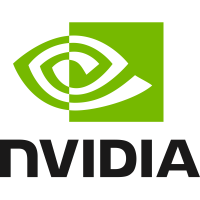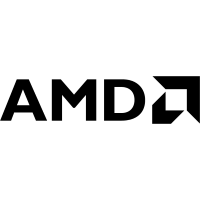NVIDIA GeForce MX130 vs AMD Radeon RX 580 XTR
Comparative analysis of NVIDIA GeForce MX130 and AMD Radeon RX 580 XTR videocards for all known characteristics in the following categories: Essentials, Technical info, Video outputs and ports, Compatibility, dimensions and requirements, API support, Memory, Technologies. Benchmark videocards performance analysis: PassMark - G3D Mark, PassMark - G2D Mark, Geekbench - OpenCL, CompuBench 1.5 Desktop - Face Detection (mPixels/s), CompuBench 1.5 Desktop - Ocean Surface Simulation (Frames/s), CompuBench 1.5 Desktop - T-Rex (Frames/s), CompuBench 1.5 Desktop - Video Composition (Frames/s), CompuBench 1.5 Desktop - Bitcoin Mining (mHash/s), GFXBench 4.0 - Car Chase Offscreen (Frames), GFXBench 4.0 - Manhattan (Frames), GFXBench 4.0 - T-Rex (Frames), GFXBench 4.0 - Car Chase Offscreen (Fps), GFXBench 4.0 - Manhattan (Fps), GFXBench 4.0 - T-Rex (Fps), 3DMark Fire Strike - Graphics Score.
Differences
Reasons to consider the NVIDIA GeForce MX130
- Videocard is newer: launch date 6 month(s) later
- 6.2x lower typical power consumption: 30 Watt vs 185 Watt
| Launch date | 17 November 2017 vs 18 April 2017 |
| Thermal Design Power (TDP) | 30 Watt vs 185 Watt |
Reasons to consider the AMD Radeon RX 580 XTR
- Around 12% higher core clock speed: 1257 MHz vs 1122 MHz
- Around 8% higher boost clock speed: 1340 MHz vs 1242 MHz
- 6.5x more texture fill rate: 193.0 GTexel / s vs 29.81 GTexel / s
- 6x more pipelines: 2304 vs 384
- 6.5x better floating-point performance: 6,175 gflops vs 953.9 gflops
- A newer manufacturing process allows for a more powerful, yet cooler running videocard: 14 nm vs 28 nm
- 4x more maximum memory size: 8 GB vs 2 GB
- Around 60% higher memory clock speed: 8000 MHz vs 5012 MHz
| Core clock speed | 1257 MHz vs 1122 MHz |
| Boost clock speed | 1340 MHz vs 1242 MHz |
| Texture fill rate | 193.0 GTexel / s vs 29.81 GTexel / s |
| Pipelines | 2304 vs 384 |
| Floating-point performance | 6,175 gflops vs 953.9 gflops |
| Manufacturing process technology | 14 nm vs 28 nm |
| Maximum memory size | 8 GB vs 2 GB |
| Memory clock speed | 8000 MHz vs 5012 MHz |
Compare benchmarks
GPU 1: NVIDIA GeForce MX130
GPU 2: AMD Radeon RX 580 XTR
| Name | NVIDIA GeForce MX130 | AMD Radeon RX 580 XTR |
|---|---|---|
| PassMark - G3D Mark | 1814 | |
| PassMark - G2D Mark | 195 | |
| Geekbench - OpenCL | 6461 | |
| CompuBench 1.5 Desktop - Face Detection (mPixels/s) | 31.613 | |
| CompuBench 1.5 Desktop - Ocean Surface Simulation (Frames/s) | 406.203 | |
| CompuBench 1.5 Desktop - T-Rex (Frames/s) | 2.034 | |
| CompuBench 1.5 Desktop - Video Composition (Frames/s) | 30.251 | |
| CompuBench 1.5 Desktop - Bitcoin Mining (mHash/s) | 107.608 | |
| GFXBench 4.0 - Car Chase Offscreen (Frames) | 2796 | |
| GFXBench 4.0 - Manhattan (Frames) | 3686 | |
| GFXBench 4.0 - T-Rex (Frames) | 3357 | |
| GFXBench 4.0 - Car Chase Offscreen (Fps) | 2796 | |
| GFXBench 4.0 - Manhattan (Fps) | 3686 | |
| GFXBench 4.0 - T-Rex (Fps) | 3357 | |
| 3DMark Fire Strike - Graphics Score | 632 |
Compare specifications (specs)
| NVIDIA GeForce MX130 | AMD Radeon RX 580 XTR | |
|---|---|---|
Essentials |
||
| Architecture | Maxwell | GCN 4.0 |
| Code name | GM108 | Polaris 20 |
| Launch date | 17 November 2017 | 18 April 2017 |
| Place in performance rating | 1013 | not rated |
| Type | Laptop | Desktop |
| Launch price (MSRP) | $229 | |
Technical info |
||
| Boost clock speed | 1242 MHz | 1340 MHz |
| Core clock speed | 1122 MHz | 1257 MHz |
| Floating-point performance | 953.9 gflops | 6,175 gflops |
| Manufacturing process technology | 28 nm | 14 nm |
| Pipelines | 384 | 2304 |
| Texture fill rate | 29.81 GTexel / s | 193.0 GTexel / s |
| Thermal Design Power (TDP) | 30 Watt | 185 Watt |
| Transistor count | 5,700 million | |
Video outputs and ports |
||
| Display Connectors | No outputs | 1x HDMI, 3x DisplayPort |
Compatibility, dimensions and requirements |
||
| Interface | PCIe 3.0 x16 | PCIe 3.0 x16 |
| Laptop size | medium sized | |
| Supplementary power connectors | None | 1x 8-pin |
| Length | 241 mm | |
API support |
||
| DirectX | 12.0 (11_0) | 12.0 (12_0) |
| OpenGL | 4.6 | 4.5 |
Memory |
||
| Maximum RAM amount | 2 GB | 8 GB |
| Memory bandwidth | 40.1 GB / s | 256.0 GB / s |
| Memory bus width | 64 Bit | 256 Bit |
| Memory clock speed | 5012 MHz | 8000 MHz |
| Memory type | GDDR5 / DDR3 | GDDR5 |
| Shared memory | 0 | |
Technologies |
||
| CUDA | ||
| GameWorks | ||
| GeForce Experience | ||
| GPU Boost | ||
| Optimus | ||









